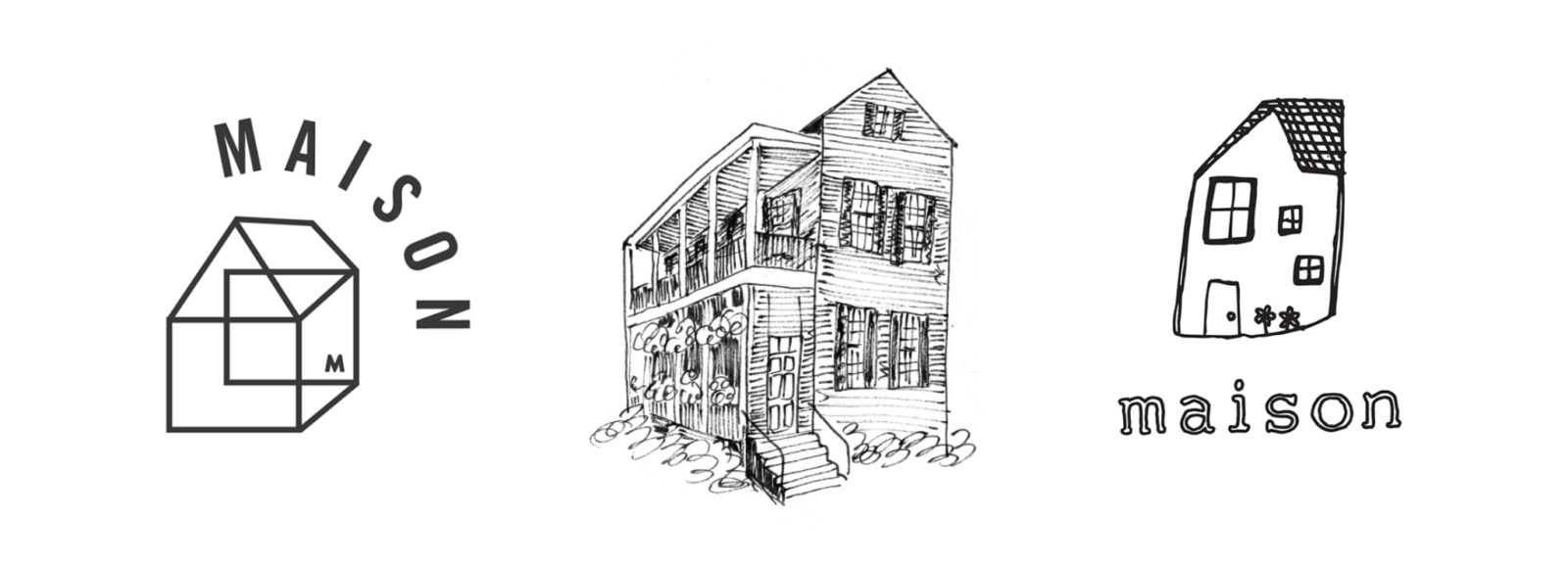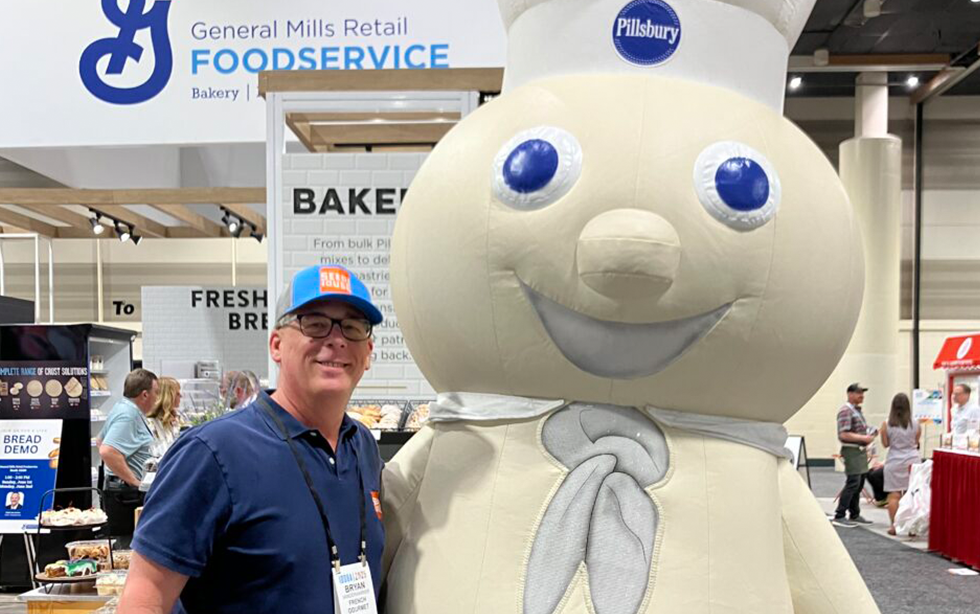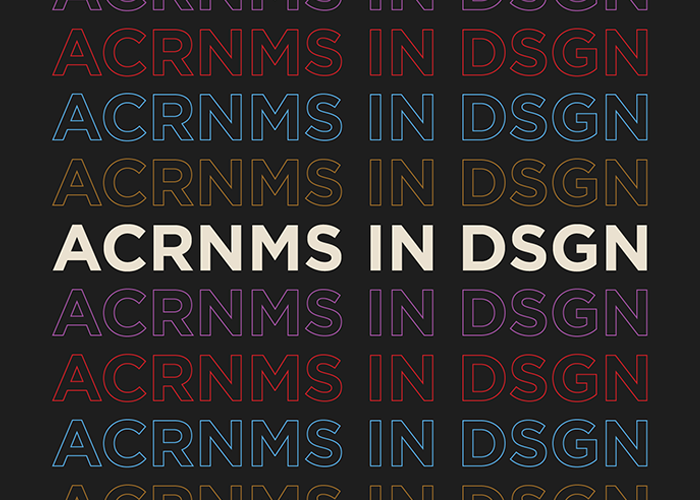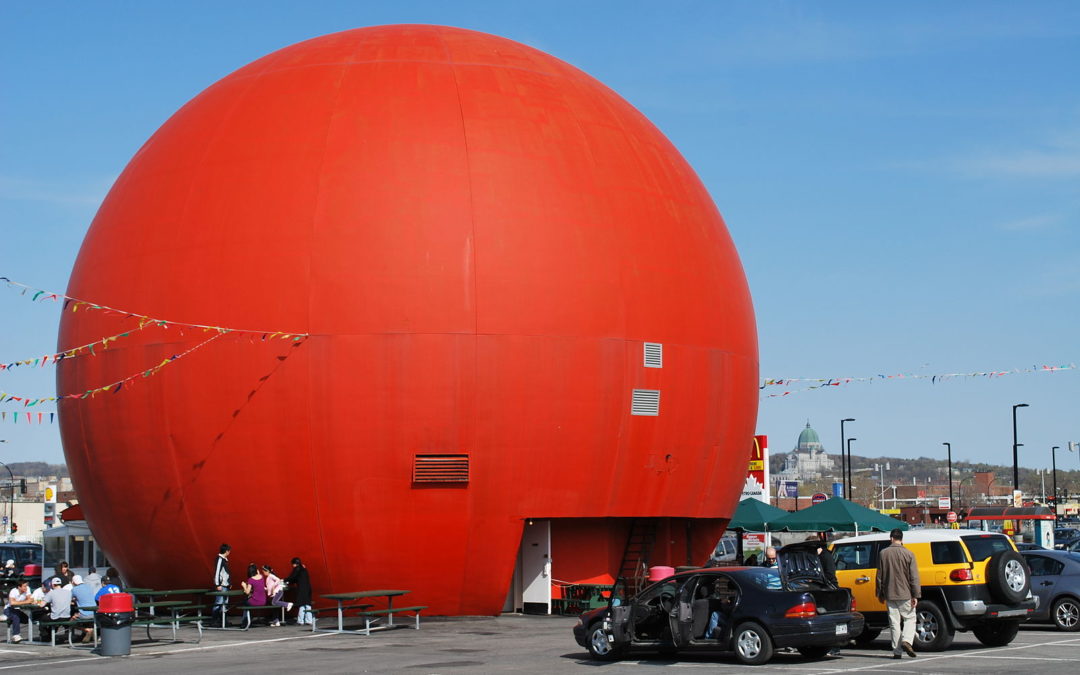
As designers, we look for inspiration in the everyday—around us, in nature, and in the man-made.
We investigate architecture because of its rich symbolism and idealism. A masterfully built home or building creates a sense of awe. A significant piece of architecture can become a symbol of an entire city or inspire a movement. Maybe it’s the intelligence of the design, the craftsmanship, or that architecture becomes time-capsules loaded with stories.
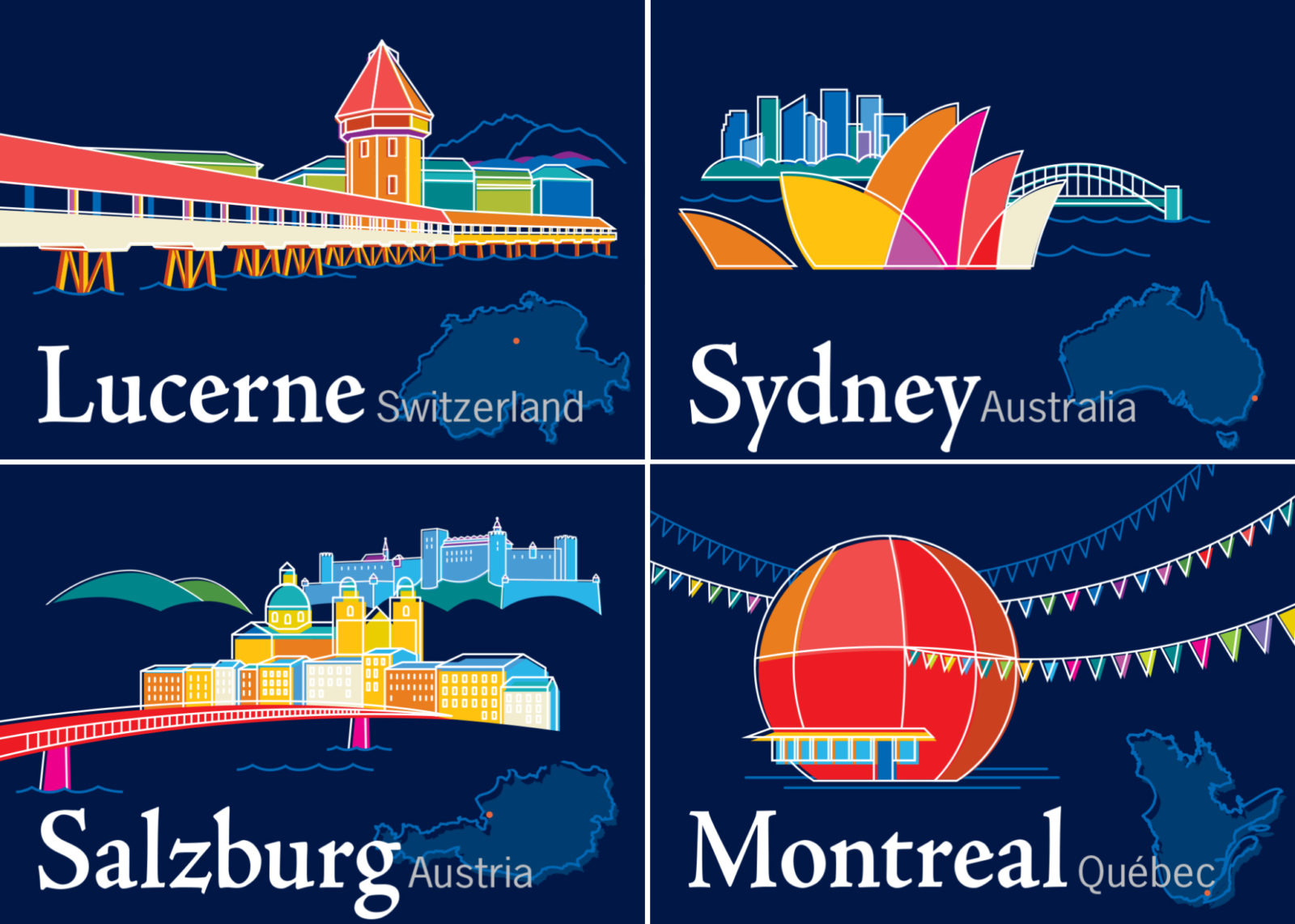 Our signage for SPC’s conference rooms use notable structures to symbolize each city.
Our signage for SPC’s conference rooms use notable structures to symbolize each city.
Above all, we want our designs to make people react: to pick a product off the shelf or look closer to see what a restaurant is all about. That reaction can’t be achieved by looking like everyone else or with a long list of features-and-benefits copy. Eventually, the designs have to communicate the basic information to consumers—but it shouldn’t be the PRIMARY message. We’re looking for the emotional connection that makes someone sit up, take notice and want to invest their time.
Connecting Emotionally through Architecture & Design
People react because they make an emotional connection with design. Our process to find that emotional inspiration leads us all over the place. Therefore it’s only natural that our exploration sometimes lands on architecture because it elicits strong responses. Alain de Botton, author of “The Architecture of Happiness” said in an interview with NPR,
“…we don’t think the same way wherever we are, that there are certain buildings that put us in certain frames of mind. You know, a well decorated, a beautiful church will put us into a mindset where we’re more receptive to dwelling on certain issues. And, you know, a supermarket will direct our thoughts in other ways…Because we’re not the same people wherever we are.”
Buildings have the power to change how we feel and we have a strong reaction. More than simply providing shelter, we live and spend our time IN architecture. Whether we are aware of it or not, we have different relationships with and opinions about every building we frequent (home, work, the grocery store, our favorite bar) and even those we don’t (the Daley Center in the Loop, the corn cobs!). Our opinions about a building are easily influenced by nostalgia, current collective opinion, or an experience.
We love ‘em (mid-century modern, “those colorful doors”)! Or we hate ‘em (Brutalism, “depressing concrete”)! But we get so emotionally invested in ‘em!
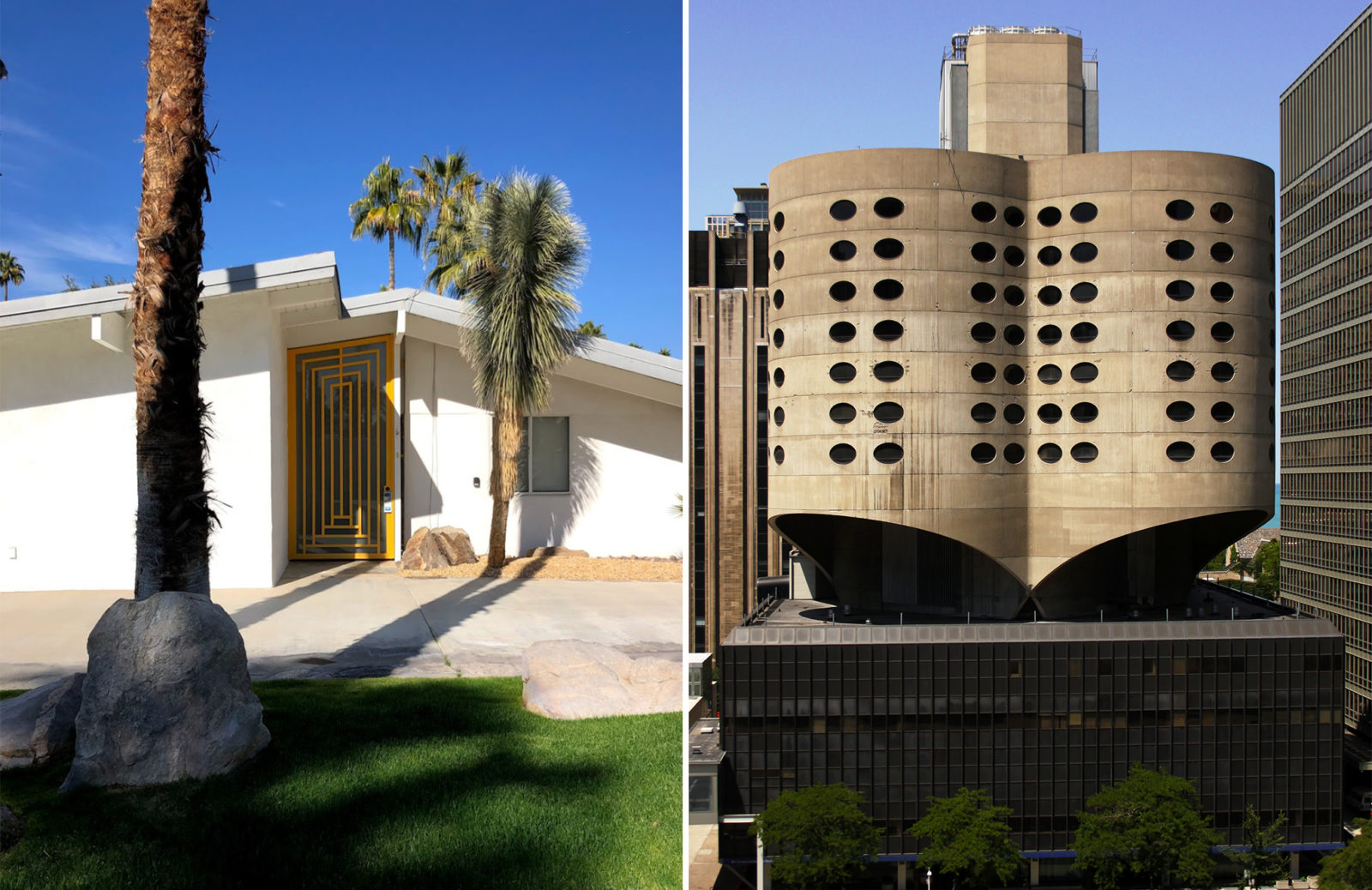 Left: Palm Springs Entryway, photo credit Laurea McLeland; Right: Prentice Women’s Hospital, recently demolished in 2014, photo credit Umbugbene via Wikipedia Commons.
Left: Palm Springs Entryway, photo credit Laurea McLeland; Right: Prentice Women’s Hospital, recently demolished in 2014, photo credit Umbugbene via Wikipedia Commons.
How we have used architecture in our designs
Buildings can become prominent symbols of a brand (like Maison’s house or Westminster’s historic landmark bakery), or a package element (such as Monticello, a UNESCO World Heritage site) because of this strong emotional response to the built world.
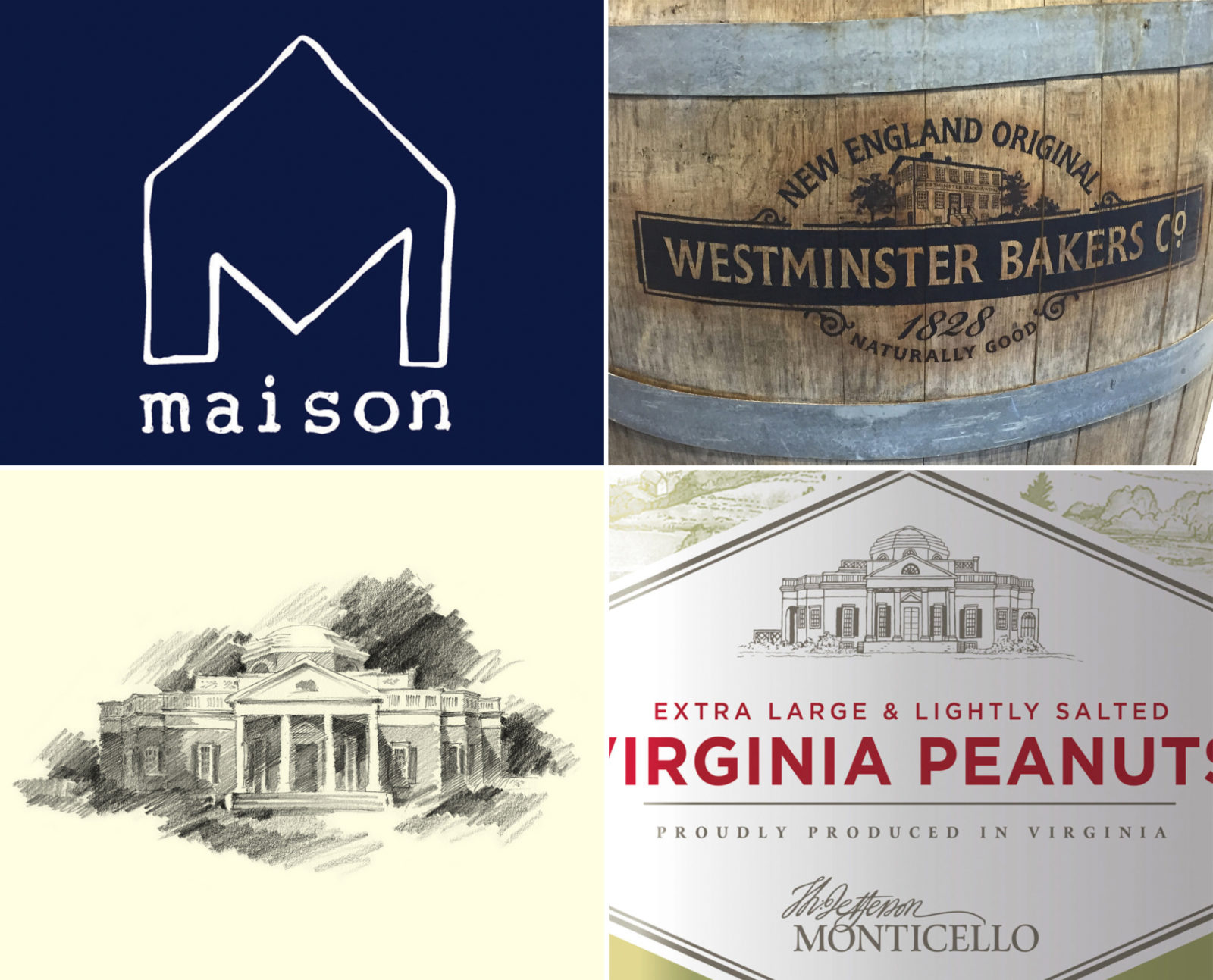 Clockwise from upper left; Maison Restaurant logo, Westminster Bakers Co. logo, sketch of Monticello used on a book jacket cover, drawing of Monticello used on packaging.
Clockwise from upper left; Maison Restaurant logo, Westminster Bakers Co. logo, sketch of Monticello used on a book jacket cover, drawing of Monticello used on packaging.
Often, a building as a symbol isn’t the right fit in our design. But we can use architecture or a stylistic element of it to help conjure the right feeling. Think of Chicago’s Prairie Style (did you know that Marion Mahony Griffin was an original member of the school and the first female licensed architect in the US?) or of the geometry of I. M. Pei’s pyramids. Architecture is a rich source of inspiration and one that we come back to again and again. Because we often stand in awe…we wonder how we can capture a bit of that in our design work.
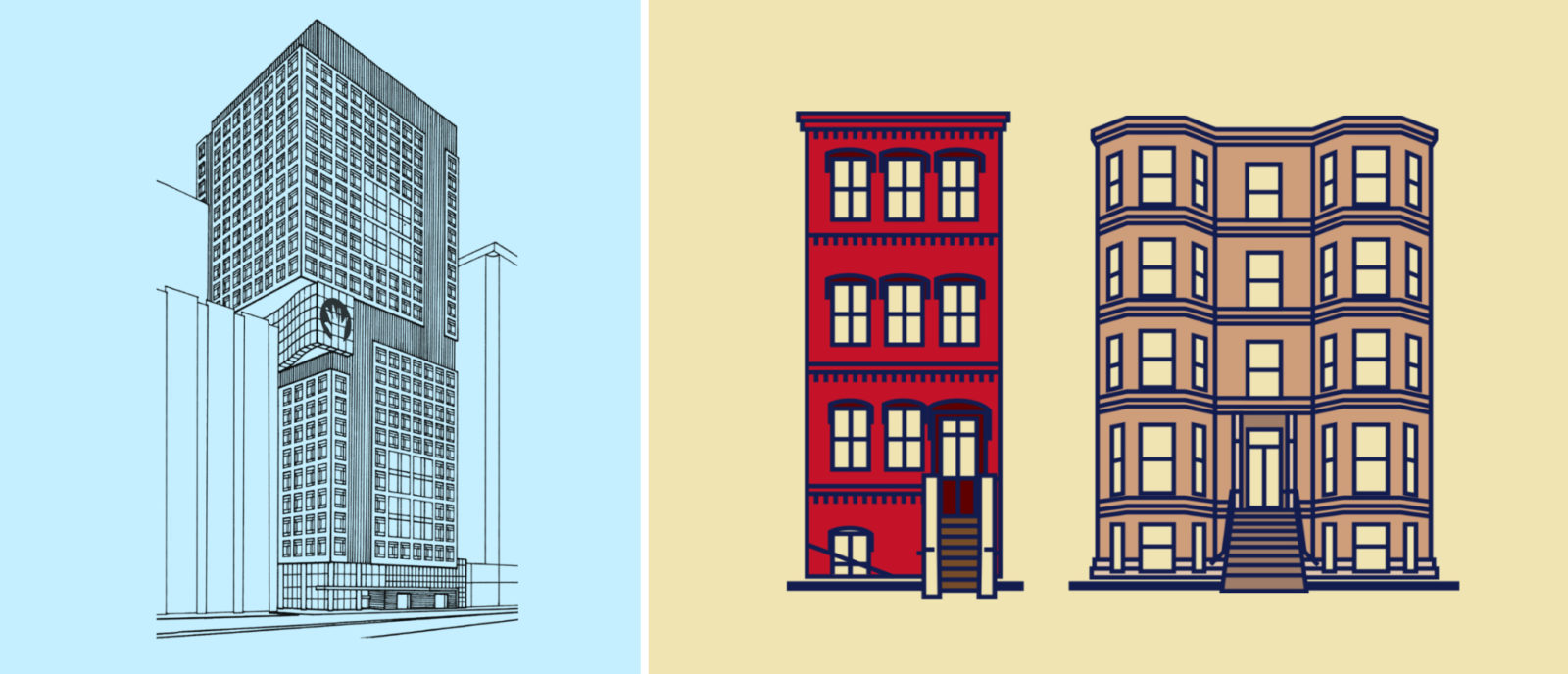 Left: Technical drawing we did of Lurie Children’s Hospital of Chicago, Right: concept designs for a Brooklyn brand.
Left: Technical drawing we did of Lurie Children’s Hospital of Chicago, Right: concept designs for a Brooklyn brand.
At the very least (or best?) architecture allows us to do more research, sketch ideas, explore and consider what symbols, and their inherent meaning, and therefore potentially employ those ideas in design on a brand’s behalf.
An exploration of houses for Maison Restaurant.
Cover Photo: Montreal’s Gibeau Orange Julep (also known The Big Orange). Image Credit: Khayman, via Wikipedia Commons.

